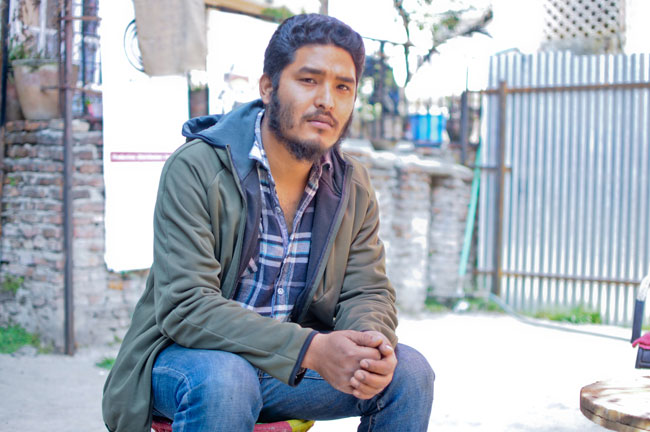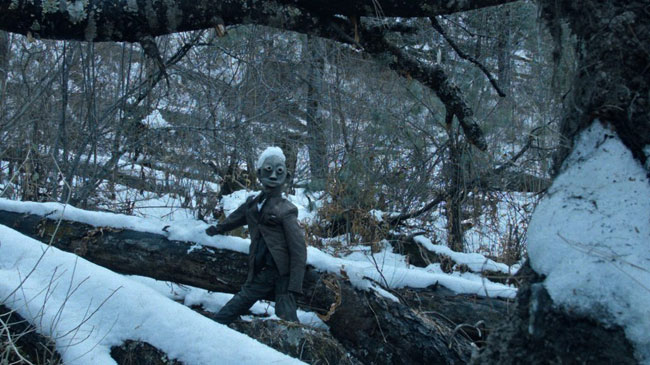After receiving much accolade and applause at the Kathmandu International Mountain Film Festival (KIMFF), the 17-minute short movie Dadyaa: The Woodpeckers of Rotha, recently bagged the special jury award for cinematography at the Sundance Film Festival. Dadyaa is a poignant Nepali story based in Karnali where Atimaley and Devi find themselves faced with a dilemma when a dear friend leaves without a word.
Priyanka Gurung sat down with Chintan Rajbhandari, director of photography of the movie, to talk about the win and reflect on the movie making process.
 Chintan Rajbhandari
Chintan Rajbhandari
How did you decide how you were going to work in the movie?
We mainly focused on production designs during pre-production and talked about the vibe and the mood of the settings. For instance, we were adamant that we needed snow and decided not to shoot on sunny days from the beginning itself. But there wasn’t much pre-planning that I could do because I had never been to Jumla. I didn’t know much about its landscape and the way of life there. I didn’t even know how a Jumli looked because I had never met anyone from that part of our country. Even though our directors had visited the location before and brought back some pictures, there wasn’t a lot we could plan about the shoots from a rented room in Kathmandu without experiencing the place on our own. The 42 days stay on location served us well.
How was the production period of the filming?
The production phase of the film was the most fun part of the entire movie making process. I really enjoyed the environment that we, the crew, had created on location. The village we were staying at was largely empty and slightly eerie. I remember being caught off guard and being completely spooked by the multiple dadyaa (wooden masks) scattered around the village while walking around in the evenings.
But also because the village was empty, each one of us was living in different houses. We ate whatever the aamas from the area would feed us. We rehearsed for two to three days and shot the next day. The daytime was certainly all about working but during the evenings we would unwind with some drinks.
Buwa wins Ncell short film competition

What was challenging about shooting at such a remote location?
In my opinion, time is always the biggest challenge in every film shooting. You just never seem to have enough time. And there are bound to be some logistical challenges in every film. Even getting to the location was a bit of a hassle. We found ourselves stuck waiting on the bridge between the roads that led to Khalanga and the other route to Rara. We somehow managed to get a lift to take the equipment up to the location. But after squeezing it all in, there was no room for the crew. We had to walk all the way up. I couldn’t believe the first day had started on such a bad note.
Also we were a small crew of 10 people and each one of us had a lot of responsibilities to handle. Even simple things like charging the batteries required a lot of effort. We had to walk to the main bazaar every time and that took about four hours.

What was your reaction on hearing about the win at the Sundance Film Festival?
The fact that our movie was picked among others in the South Asian region was a big deal for us. Also it was a team effort. Many other factors such as production design also contributed to making the cinematography as good as it turned out to be. As for the reason behind the win in the cinematography category, I feel it was because of our simple presentation. Photography technology has become really sophisticated these days.
People don’t have to do anything – the camera will take the picture for you. We even have drones and other fancy equipment as well. But Dadyaa went back to the basics. We just took the directors’ story and presented it with a lot of simplicity in a one-shot-one-scene shoot format.
What is your favorite part of the entire short film?
Near the end there is a shot in the film where our main actor has delivered an incredible performance. We shot that in the middle of a jungle and it was snowing. The scene required our protagonist to become emotional and he genuinely started crying. I remember the atmosphere on location at the time as well. We could all feel his sadness. It was intense.
On screen as well that particular part of the movie was just as powerful. I wasn’t certain what festival producers and juries would make of it but I was sure that this part would resonate with the Nepali audience.
Tell us about your future plans?
I hadn’t thought our film would get this sort of recognition and this just makes me want to continue with my work. Though I do hope I will get to work on other films in this manner as well. In Daadya, we worked with the flow, in a very free manner. I was also given the required space and time to do my job and that helped me bring out my best.
Whenever a director hands me a script to read, I enjoy it when it features stories and characters that resonate with our society. Those are the kinds of films that get me excited. Stories of protagonists who romance each other in five star restaurants or loud and over dramatic action movies where boisterous youngsters run around the capital shooting guns don’t really appeal to me. That is not our story.
People assume that only short films can portray personal stories. To see somebody who has released an independent movie feel the need to go commercial for their feature movie is very disheartening.







































